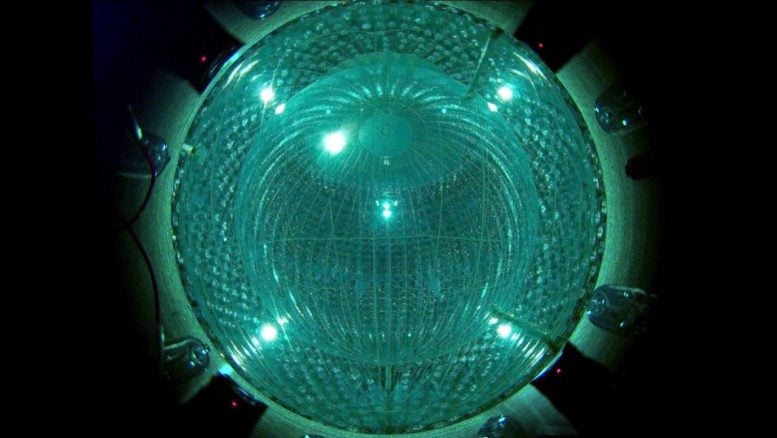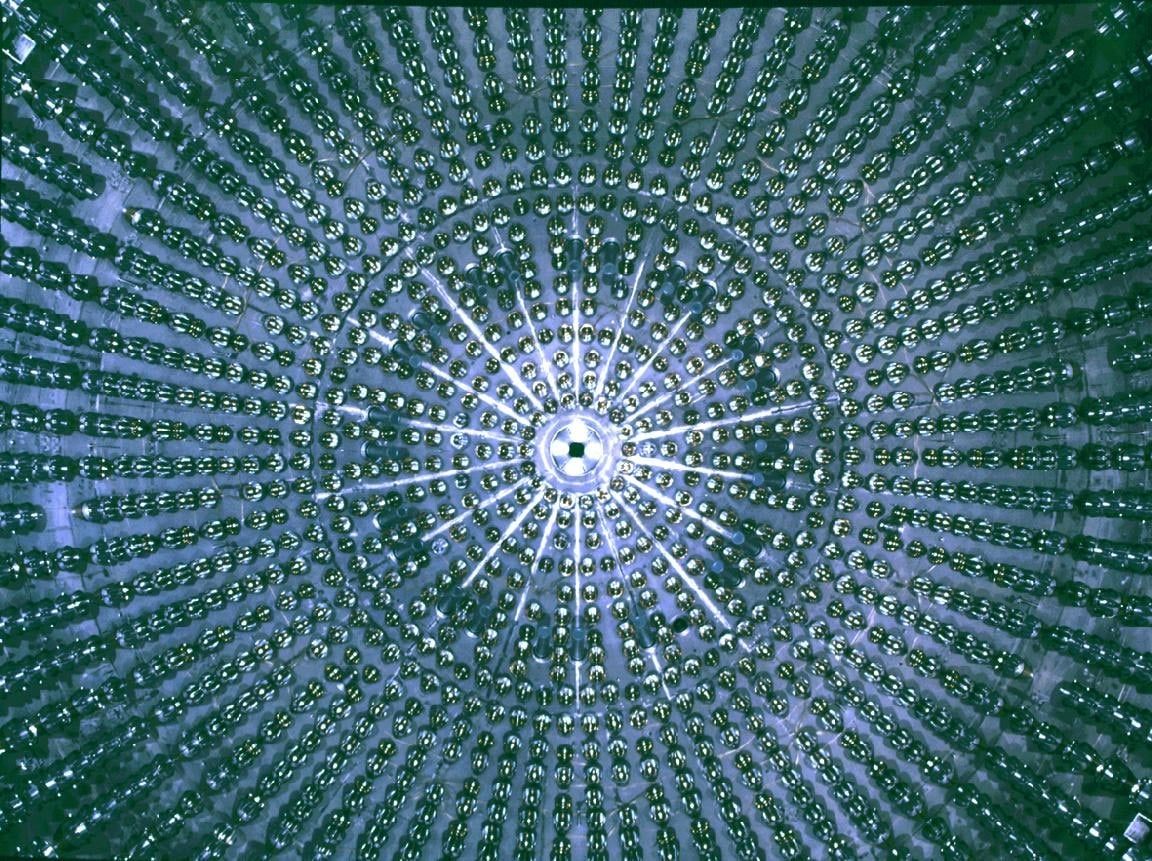View inside the Borexino detector. Image credit: Borexino Collaboration
Neutrinos provide the first experimental evidence for a catalyzed fusion that dominates in many stars
An international team of around 100 scientists from the Borexino Collaboration, including particle physicist Andrea Pocar from the University of Massachusetts Amherst, reports in nature This week, neutrinos were discovered by the sun, which for the first time directly revealed that the carbon-nitrogen-oxygen (CNO) fusion cycle is at work in our sun.
The CNO cycle is the dominant source of energy that powers stars heavier than the Sun, but so far it has not been directly detected in any star, explains Pocar.
Stars get energy for much of their lives by fusing hydrogen into helium, he adds. In stars like our sun or our lighter, this usually happens via the proton-proton chains. However, many stars are heavier and hotter than our Sun and contain elements heavier than helium in their composition, a property known as metallicity. The prediction since the 1930s is that the CNO cycle will dominate for heavy stars.
Neutrinos emitted during these processes provide a spectral signature with which scientists can distinguish those from the “proton-proton chain” from those from the “CNO cycle”. Pocar emphasizes: “Confirming that CNO burns in our sun where it only works one percent strengthens our confidence that we understand how stars work.”

The Borexino detector is located deep below the Apennines in central Italy at the Laboratori Nazionali del Gran Sasso of the INFN. It recognizes neutrinos as flashes of light that arise when neutrinos collide with electrons in 300 tons of ultra-pure organic scintillator. Image credit: Borexino Collaboration
In addition, CNO neutrinos can help resolve an important open question in stellar physics, he adds. That is, how the central metallicity of the sun, which can only be determined by the CNO neutrino rate from the nucleus, is related to the metallicity elsewhere in a star. Traditional models have encountered difficulties – spectroscopic measurements of surface metallicity do not match the measurements of subsurface metallicity derived from another method called helioseismological observations.
According to Pocar, neutrinos are really the only direct probe science has for the core of stars, including the sun, but they are extremely difficult to measure. Up to 420 billion of them hit every square centimeter of the earth’s surface every second, but practically all of them happen without interaction. Scientists can only detect them with very large detectors with exceptionally low background radiation values.
The Borexino detector is located deep below the Apennines in central Italy at the Laboratori Nazionali del Gran Sasso of the INFN. It recognizes neutrinos as flashes of light that arise when neutrinos collide with electrons in 300 tons of ultra-pure organic scintillator. Its great depth, size, and purity make Borexino a unique detector for this type of science, alone in its class for low-background radiation, says Pocar. The project was initiated in the early 1990s by a group of physicists led by Gianpaolo Bellini from the University of Milan, Frank Calaprice from Princeton and the late Raju Raghavan from Bell Labs.
Up until its most recent discoveries, the Borexino collaboration had successfully measured components of the solar neutrino fluxes from proton-proton, helped refine the vibrational parameters of neutrino taste, and most impressively measured the first step in the cycle: the very low energy. pp ‘neutrinos, remembers Pocar.
Researchers dreamed of expanding the scientific scope to look for CNO neutrinos as well – in a narrow spectral range with particularly little background – but that price seemed out of reach. However, research groups from Princeton, Virginia Tech, and UMass Amherst believed that CNO neutrinos could still be uncovered using the additional purification steps and methods they had developed to achieve the exquisite detector stability required.
Over the years, and thanks to a series of steps taken to identify and stabilize the backgrounds, the American scientists and the entire collaboration has been successful. “Beyond the unveiling of the CNO neutrinos that are the subject of this week nature Articles now even have the potential to solve the metallicity problem, ”says Pocar.
Before the discovery of the CNO neutrino, the laboratory had planned that Borexino should end operations at the end of 2020. But because the data that was used in the analysis for that nature Paper has been frozen, scientists have continued to collect data as core purity has continued to improve, making a new finding that focuses on metallicity a real possibility, says Pocar. Data collection could last until 2021 as the logistics and approval required during operations are not trivial and time consuming. “Every extra day helps,” he notes.
Pocar has been involved in the project under the direction of Frank Calaprice since his school days at Princeton, where he worked on the design, construction of the nylon vessel and commissioning of the fluid handling system. Later he worked with his students at UMass Amherst on data analysis and, most recently, on techniques for characterizing the background for the CNO neutrino measurement.
Reference: “Experimental evidence of neutrinos generated in the sun in the CNO fusion cycle” by The Borexino Collaboration, November 25, 2020, nature.
DOI: 10.1038 / s41586-020-2934-0
This work was supported in the USA by the National Science Foundation. Borexino is an international collaboration also funded by the Italian National Institute for Nuclear Physics (INFN) and funding agencies in Germany, Russia and Poland.



